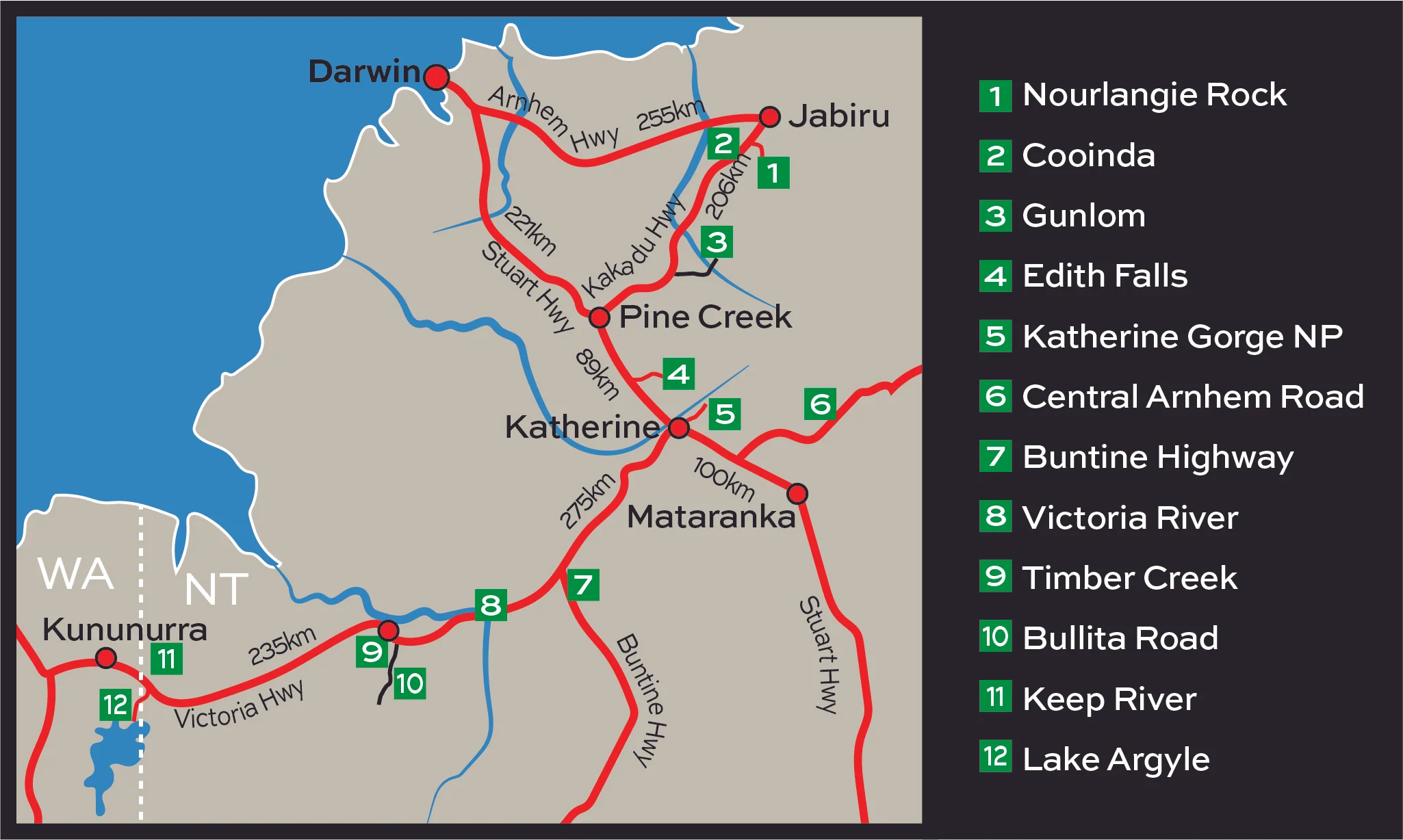Regional Map
The area covered in this website extends from the township of Jabiru in Kakadu National Park, south west to Pine Creek, Katherine and Mataranka and west to Kununurra in northern Western Australia.
The entire Kakadu - Katherine - Kununurra birding route covers 1100 kilometres (one way) of mostly sealed road to monsoon forest, savannah woodland, sandstone escarpment, wetlands and major river systems with reliable birding sites for the local endemic and sought-after species together with the common Top End species.
Examples of shorter trips in the Trip Planner are designed to maximize the number of target species likely to be encountered and offer reasonable alternatives for those who can't do the whole route.
ROAD CONDITIONS
Wildlife and large animals are frequently encountered on roads throughout the Top End. No one wants to injure animals but swerving to avoid them often causes accidents & injury to vehicle occupants.
You will be sharing the roads with very large vehicles known as road trains (articulated trucks with three trailers).
Great care should be taken when overtaking road trains and if travelling in the Wet season do not attempt to cross flooded roads.
TIPS AND OPTIONS
Access to Gunlom (3) is via a 39 kilometre gravel road which can get very rough as the dry season progresses. With the exception of White-throated Grass-wren there are alternative sites to see other target species that can be found there.
A short diversion of about 12 kilometres down the Buntine Highway (7) to Humbles Creek can produce good numbers of grassfinches and mannikins, including the elusive Yellow-rumped Mannikin.
The Bullita Road (10) offers good birding, particularly for grassfinches and mannikins. It is only necessary to travel 20 kilometres along the road and it can be negotiated by conventional vehicle with care, but it is rough.
Keep River National Park (11) has gravel access roads however they are usually well maintained. Camping areas are well situated and the walks offer good birding with the occasional appearance of some arid zone species such as Grey-headed Honeyeater and Grey-fronted Honeyeater. Grey Falcon has been recorded a number of times along the road into the Gurrandalng Camp Ground.
Yellow Chat is usually found each year at Lake Argyle (12). A full day is required to do the boat trip. There is a link to Lake Argyle Cruises on the 'Links' page
Kununurra is an excellent location for grassfinches and mannikins. A comprehensive search along public roads adjoining the lake, open grassland, irrigation canals and farming areas can produce all of the species found in northern Australia, including Yellow-rumped and Pictorella Mannikin.
Katherine fuel prices
as of 19 July 2017
Unleaded Petrol $1.40 per litre
Diesel $1.30 per litre
MOBILE/CELL 'PHONE SERVICE
Mobile 'phone & wireless internet is available in Darwin, Jabiru, Cooinda, Pine Creek, Katherine, Mataranka, Timber Creek & Kununurra.
QUARANTINE
At the WA/NT border there is a checkpoint for all vehicles travelling west. Fresh fruit, vegetables and honey cannot be taken into WA and are confiscated so only take enough supplies to get you to the Western Australian border.



